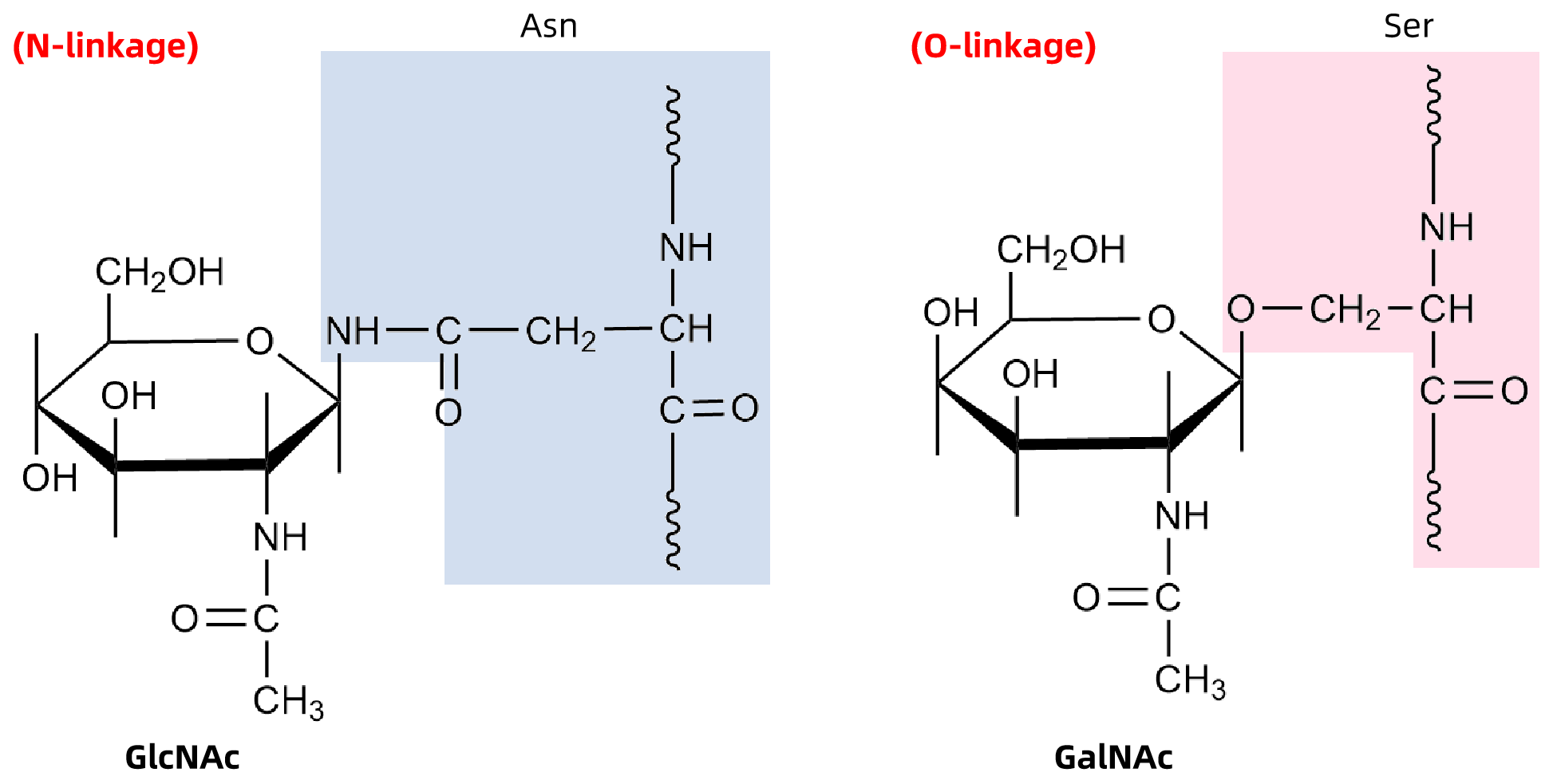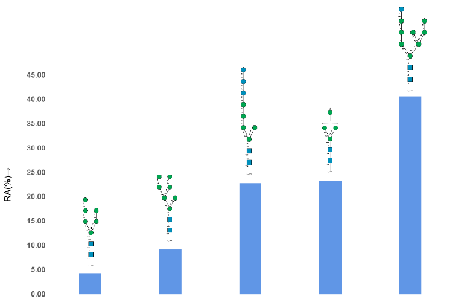Comprehensive Glycosylation Analysis Service
Glycosylation is a very important type of protein post-translational modification (PTM). It is estimated that over half of eukaryotic proteins undergo glycosylation, with glycoproteins playing pivotal roles in many biological processes and have important cellular functions.The two main types of protein glycosylation are N-glycosylation (glycans bound to asparagine) and O-glycosylation (glycans bound to serine or threonine). Glycosylation is the process by which proteins or lipids are attached to sugars under the control of enzymes, starting at the endoplasmic reticulum and ending in the Golgi apparatus. Glycosyltransferases transfer sugars to proteins, and form glycosidic bonds with amino acid residues on proteins. Proteins undergo glycosylation to form glycoproteins. Glycosylation has an important role in modifying proteins, regulating proteins, and helping protein folding functions. It has an important impact on the properties and functions of proteins, and is a new technology that can change the properties of proteins, which is of great biological significance.

Figure 1. Schematic Diagram of Glycosylation
Mass spectrometry can be used to detect and analyze glycosylation sites and glycoforms. MtoZ Biolabs can provide LC-MS/MS-based Comprehensive Glycosylation Analysis Service, including glycosylation sites and corresponding glycoform analysis services.
Analysis Workflow
We usually first select a specific enzyme for enzymatic digestion, and then desalt the enzymatically digested peptides for glycosylated peptide enrichment, which can provide high enrichment efficiency and more comprehensive characterization of glycoproteins. For LC-MS/MS analysis, HCD/SCE or ETD and HCD combined fragmentation is used to obtain as much secondary fragmentation information as possible. Through software analysis and manual proofreading of the secondary spectrum of glycosylated peptides, accurate information about the glycosylation site and the glycoform on protein was obtained.

Service Advantages
1. High-Precision Mass Spectrometry Platform
Equipped with high-resolution mass spectrometers (e.g., LC-MS/MS) that provide high sensitivity and accuracy, capable of identifying complex glycosylation structures.
2. Advanced Quantitative Analysis
Utilizing state-of-the-art labeled and label-free quantification techniques to achieve precise quantification of glycosylation modifications, supporting in-depth biological process research.
3. Comprehensive Analysis Support
Providing end-to-end services from sample preparation to data analysis, ensuring data reliability and reproducibility while meeting diverse client needs.
4. Rapid Turnaround and Professional Support
Ensuring fast project turnaround with efficient communication and in-depth data interpretation support, facilitating client decision-making and research progress.
Sample Results

Figure 2. Five Types Glycoforms with a High Proportion of Glycoforms
Sample Submission Requirements

Services at MtoZ Biolabs

Applications
Biologics, including protein drugs, antibody drugs, vaccines, collagen, purified proteins and protein complexes.
FAQ
Q1: In addition to the N-X-S/T(X!=P) motif, is there any other motif type for N glycosylation?
Yes, non-standard motifs such as N-X-C.
Q2: Does O glycosylation have the same core law of pentaccharide as N glycosylation?
There is currently no specific law for O glycosylation.
How to order?







